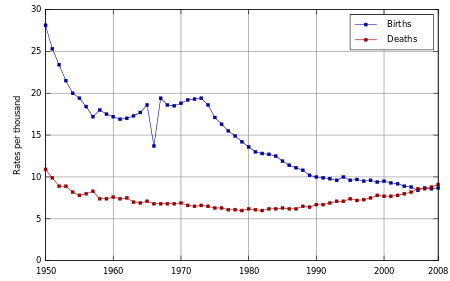Hinoe uma
Hinoe uma (Japanese) or bing wu (Chinese; written in both 丙午, meaning "fire horse" in Chinese) is the 43rd combination of the sexagenary cycle. Due to the belief that people born on this year have a very strong personality, birthrates in Japan tend to see a sharp decline.[2]
| 1st millennium | 2nd millennium | 3rd millennium |
|---|---|---|
|
|
|
References
- Haberman, Clyde (1987-01-15). "Japan's Zodiac: '66 was a very odd year". The New York Times. Retrieved 2015-10-21.
- Kaku, Kanae (April 1975). "Increased induced abortion rate in 1966, an aspect of a Japanese folk superstition". Annals of Human Biology. 2 (2): 111–115. doi:10.1080/03014467500000651. PMID 1052742.
This article is issued from Wikipedia. The text is licensed under Creative Commons - Attribution - Sharealike. Additional terms may apply for the media files.
